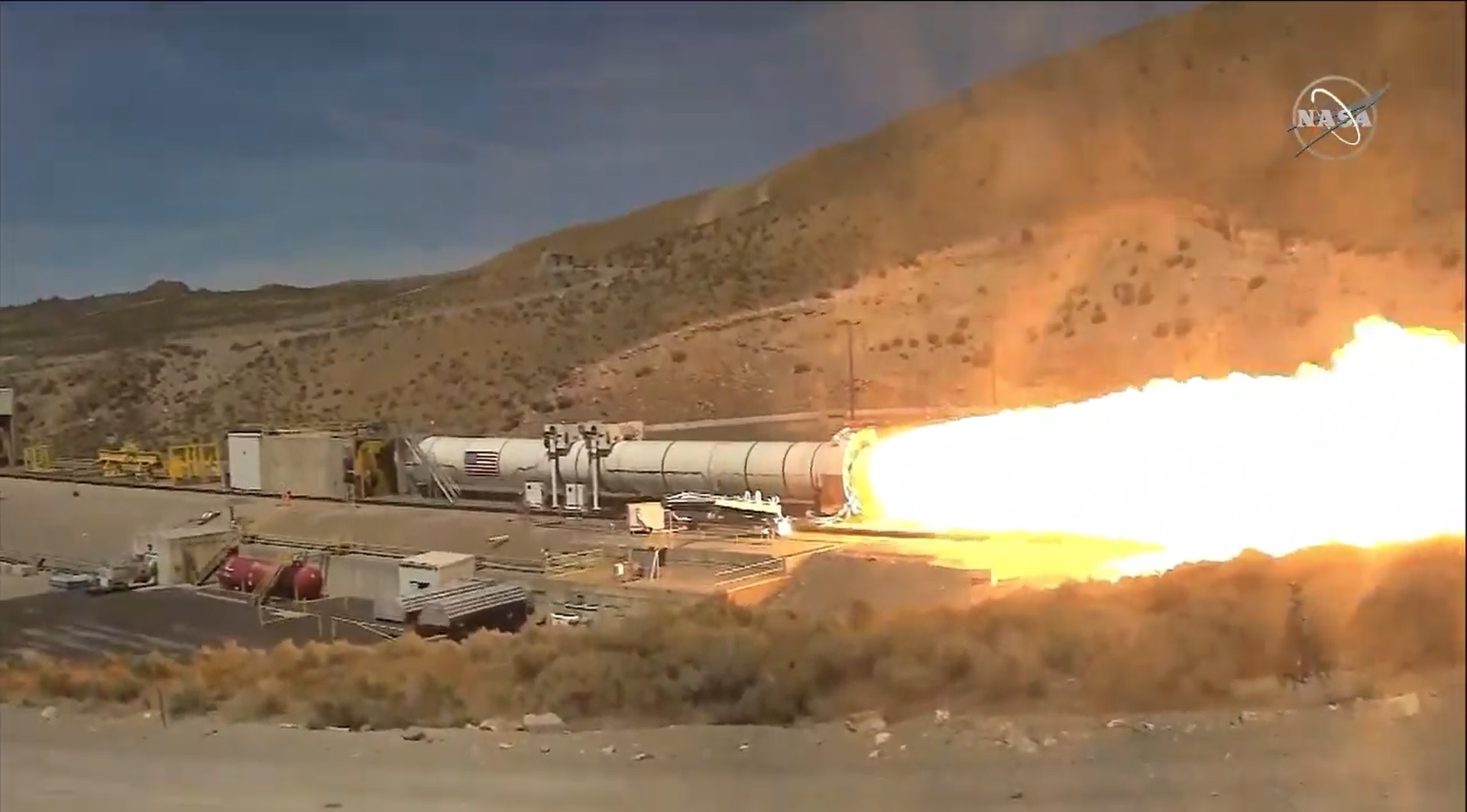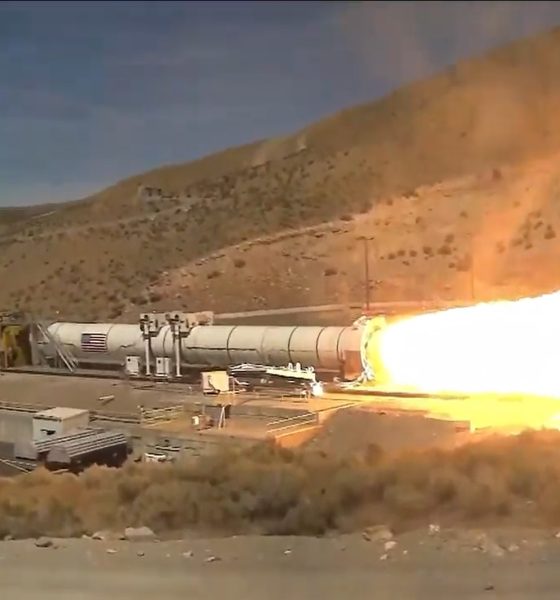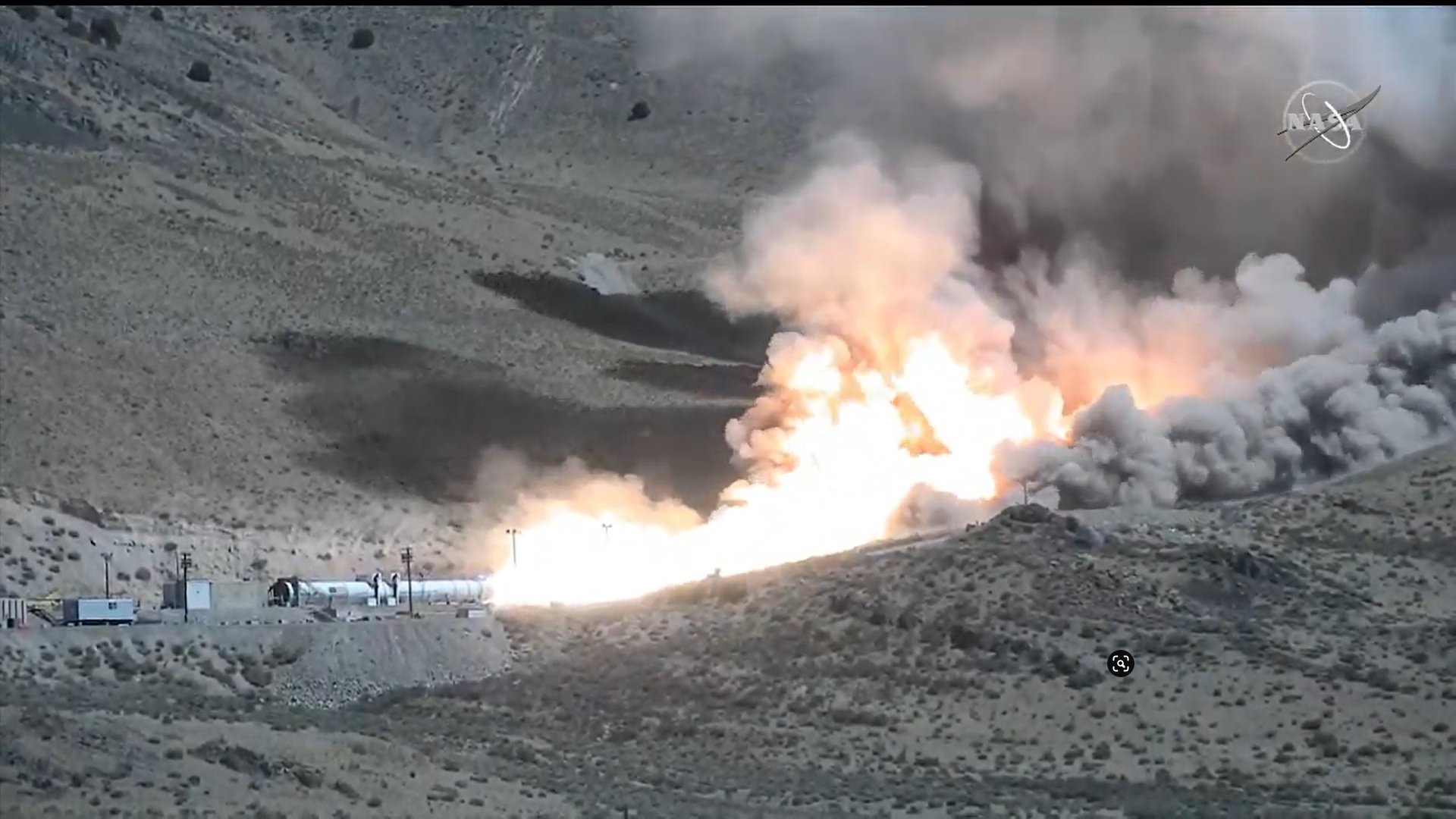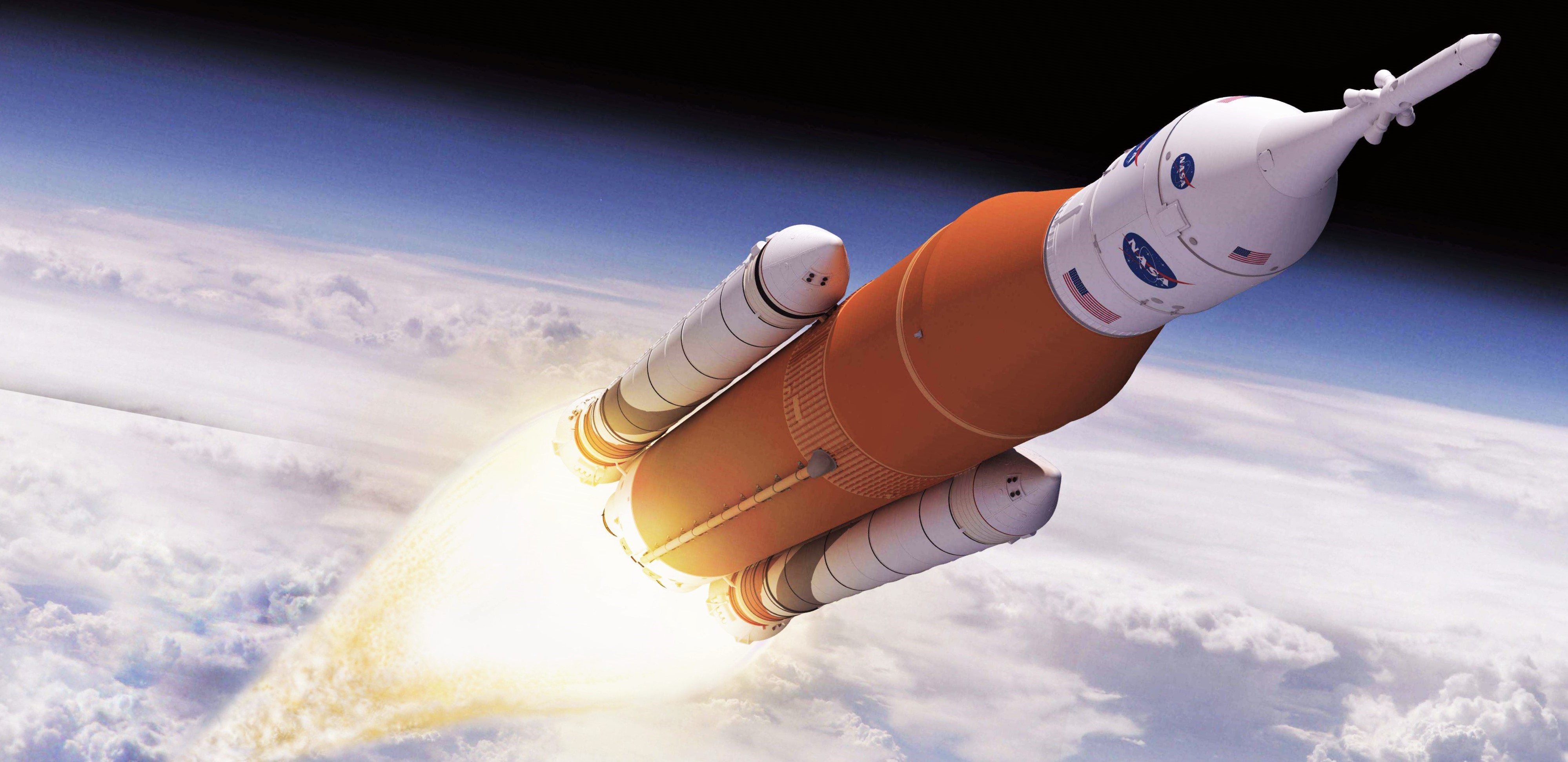

News
NASA’s Artemis Moon mission hits important milestone with successful full-scale booster test
NASA’s upcoming Artemis mission to the Moon hit an important milestone today by successfully ground testing a full-scale version of its newest rocket booster.
Building on the completion of other similar tests of the booster – named Flight Support Booster 1 (FSB-1) – which qualified it for flight as part of the agency’s upcoming Space Launch System (SLS), this most recent test used new propellant materials and verified that the ballistic requirements of its five motors were met. In a follow up teleconference, NASA and its partners confirmed the test accomplished its goals.
https://twitter.com/JimBridenstine/status/1301260812342890496
“NASA and Northrop Grumman have completed testing for the boosters used for the first three Artemis missions of the agency’s lunar program,” the digital press kit detailed. “FSB-1 builds upon prior tests of the rocket’s five-segment solid rocket booster to evaluate improvements and new materials in the boosters for missions beyond Artemis III.”
FSB-1 and its variants are primarily built by NASA partner Northrop Grumman whose facility in Promontory, Utah is where today’s test took place. The recent test firing burned for about two minutes and produced 3.6 million pounds of thrust. Its success is a nod to NASA’s claim that these are the largest, most powerful rocket boosters ever built for flight. Measuring 167 feet long and 12 feet in diameter, FSB-1-type boosters will fly in pairs along with the main SLS rocket body and cargo.

NASA’s Artemis mission is dubbed as the “twin sister of Apollo” and is aiming to return humans to the Moon by 2024. The agency has set out to develop a whole suite of technologies to support both a sustainable lunar-oriented mission and a subsequent Mars mission, engaging the commercial space community along the way. While the launch components of Artemis involve the traditional NASA path of using long-time contractors, other parts of the mission have been opened to other bidders whose contract winners have included SpaceX.
As an add-on to its success in launching the first astronauts to the ISS from American soil since the Space Shuttle’s retirement in 2011, SpaceX has also made headway in NASA’s competitive Moon race. The private space company has already procured four contracts to develop and lunar launch and landing capabilities for the agency, one as recently as the end of August. SpaceX also has multiple Moon-oriented launch contracts independent of NASA.
 NASA’s SLS rocket seen in its Block 1 configuration with on Orion capsule on top. (NASA)
NASA’s SLS rocket seen in its Block 1 configuration with on Orion capsule on top. (NASA)
One of the SLS’s primary competitors will be SpaceX’s Falcon Heavy and Starship rockets. The company has already begun testing prototypes of its rocket-lander combination along with setting world records with its new Raptor engine. While SpaceX’s primary mission is to ferry humans to Mars for lifelong stays, the Moon is already providing paying customers for the venture.
Last year, CEO Elon Musk announced a private charter agreement between eccentric Japanese billionaire Yusaku Maezawa and the rocket maker for a lunar trip in 2023. SpaceX’s earliest NASA-backed trip to the Moon is set for 2022 while the agency’s own Artemis mission has 2024 on its calendar for launch.
You can watch NASA’s full Artemis mission booster test below:

News
Tesla FSD fleet is nearing 7 billion total miles, including 2.5 billion city miles
As can be seen on Tesla’s official FSD webpage, vehicles equipped with the system have now navigated over 6.99 billion miles.

Tesla’s Full Self-Driving (Supervised) fleet is closing in on almost 7 billion total miles driven, as per data posted by the company on its official FSD webpage.
These figures hint at the massive scale of data fueling Tesla’s rapid FSD improvements, which have been quite notable as of late.
FSD mileage milestones
As can be seen on Tesla’s official FSD webpage, vehicles equipped with the system have now navigated over 6.99 billion miles. Tesla owner and avid FSD tester Whole Mars Catalog also shared a screenshot indicating that from the nearly 7 billion miles traveled by the FSD fleet, more than 2.5 billion miles were driven inside cities.
City miles are particularly valuable for complex urban scenarios like unprotected turns, pedestrian interactions, and traffic lights. This is also the difference-maker for FSD, as only complex solutions, such as Waymo’s self-driving taxis, operate similarly on inner-city streets. And even then, incidents such as the San Francisco blackouts have proven challenging for sensor-rich vehicles like Waymos.
Tesla’s data edge
Tesla has a number of advantages in the autonomous vehicle sector, one of which is the size of its fleet and the number of vehicles training FSD on real-world roads. Tesla’s nearly 7 billion FSD miles then allow the company to roll out updates that make its vehicles behave like they are being driven by experienced drivers, even if they are operating on their own.
So notable are Tesla’s improvements to FSD that NVIDIA Director of Robotics Jim Fan, after experiencing FSD v14, noted that the system is the first AI that passes what he described as a “Physical Turing Test.”
“Despite knowing exactly how robot learning works, I still find it magical watching the steering wheel turn by itself. First it feels surreal, next it becomes routine. Then, like the smartphone, taking it away actively hurts. This is how humanity gets rewired and glued to god-like technologies,” Fan wrote in a post on X.
News
Tesla starts showing how FSD will change lives in Europe
Local officials tested the system on narrow country roads and were impressed by FSD’s smooth, human-like driving, with some calling the service a game-changer for everyday life in areas that are far from urban centers.

Tesla has launched Europe’s first public shuttle service using Full Self-Driving (Supervised) in the rural Eifelkreis Bitburg-Prüm region of Germany, demonstrating how the technology can restore independence and mobility for people who struggle with limited transport options.
Local officials tested the system on narrow country roads and were impressed by FSD’s smooth, human-like driving, with some calling the service a game-changer for everyday life in areas that are far from urban centers.
Officials see real impact on rural residents
Arzfeld Mayor Johannes Kuhl and District Administrator Andreas Kruppert personally tested the Tesla shuttle service. This allowed them to see just how well FSD navigated winding lanes and rural roads confidently. Kruppert said, “Autonomous driving sounds like science fiction to many, but we simply see here that it works totally well in rural regions too.” Kuhl, for his part, also noted that FSD “feels like a very experienced driver.”
The pilot complements the area’s “Citizen Bus” program, which provides on-demand rides for elderly residents who can no longer drive themselves. Tesla Europe shared a video of a demonstration of the service, highlighting how FSD gives people their freedom back, even in places where public transport is not as prevalent.
What the Ministry for Economic Affairs and Transport says
Rhineland-Palatinate’s Minister Daniela Schmitt supported the project, praising the collaboration that made this “first of its kind in Europe” possible. As per the ministry, the rural rollout for the service shows FSD’s potential beyond major cities, and it delivers tangible benefits like grocery runs, doctor visits, and social connections for isolated residents.
“Reliable and flexible mobility is especially vital in rural areas. With the launch of a shuttle service using self-driving vehicles (FSD supervised) by Tesla in the Eifelkreis Bitburg-Prüm, an innovative pilot project is now getting underway that complements local community bus services. It is the first project of its kind in Europe.
“The result is a real gain for rural mobility: greater accessibility, more flexibility and tangible benefits for everyday life. A strong signal for innovation, cooperation and future-oriented mobility beyond urban centers,” the ministry wrote in a LinkedIn post.
News
Tesla China quietly posts Robotaxi-related job listing
Tesla China is currently seeking a Low Voltage Electrical Engineer to work on circuit board design for the company’s autonomous vehicles.

Tesla has posted a new job listing in Shanghai explicitly tied to its Robotaxi program, fueling speculation that the company is preparing to launch its dedicated autonomous ride-hailing service in China.
As noted in the listing, Tesla China is currently seeking a Low Voltage Electrical Engineer to work on circuit board design for the company’s autonomous vehicles.
Robotaxi-specific role
The listing, which was shared on social media platform X by industry watcher @tslaming, suggested that Tesla China is looking to fill the role urgently. The job listing itself specifically mentions that the person hired for the role will be working on the Low Voltage Hardware team, which would design the circuit boards that would serve as the nervous system of the Robotaxi.
Key tasks for the role, as indicated in the job listing, include collaboration with PCB layout, firmware, mechanical, program management, and validation teams, among other responsibilities. The role is based in Shanghai.
China Robotaxi launch
China represents a massive potential market for robotaxis, with its dense urban centers and supportive policies in select cities. Tesla has limited permission to roll out FSD in the country, though despite this, its vehicles have been hailed as among the best in the market when it comes to autonomous features. So far, at least, it appears that China supports Tesla’s FSD and Robotaxi rollout.
This was hinted at in November, when Tesla brought the Cybercab to the 8th China International Import Expo (CIIE) in Shanghai, marking the first time that the autonomous two-seater was brought to the Asia-Pacific region. The vehicle, despite not having a release date in China, received a significant amount of interest among the event’s attendees.








